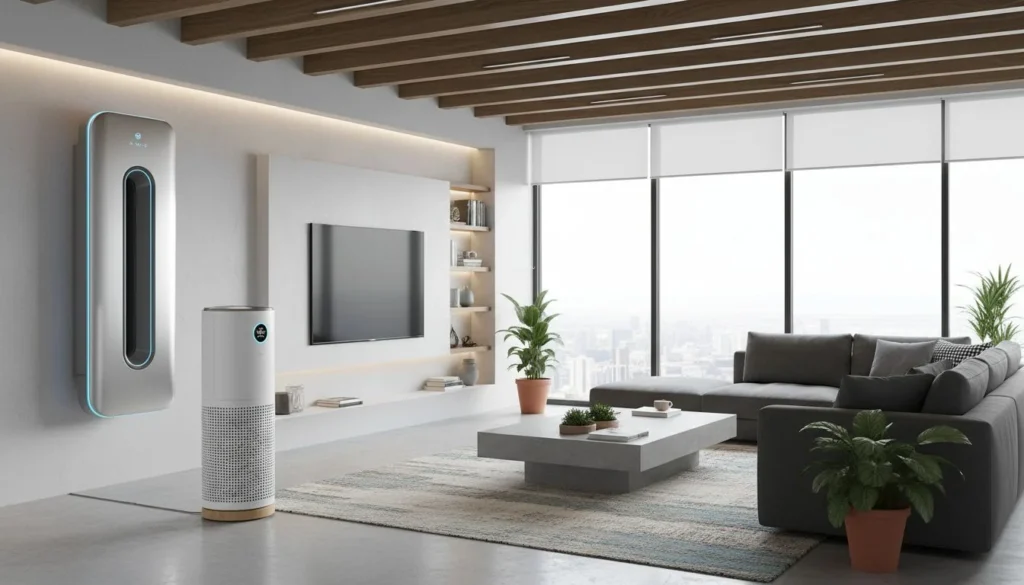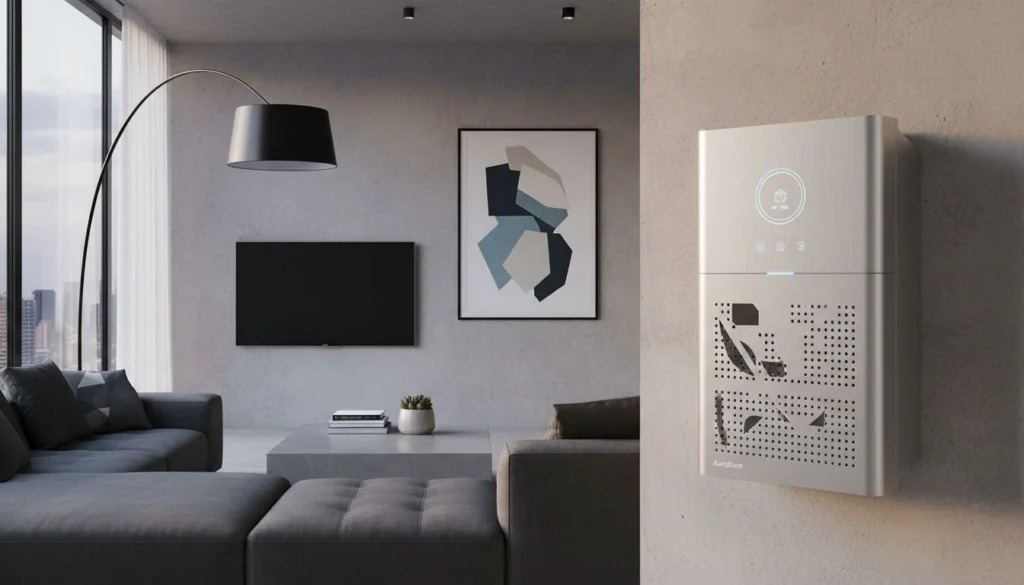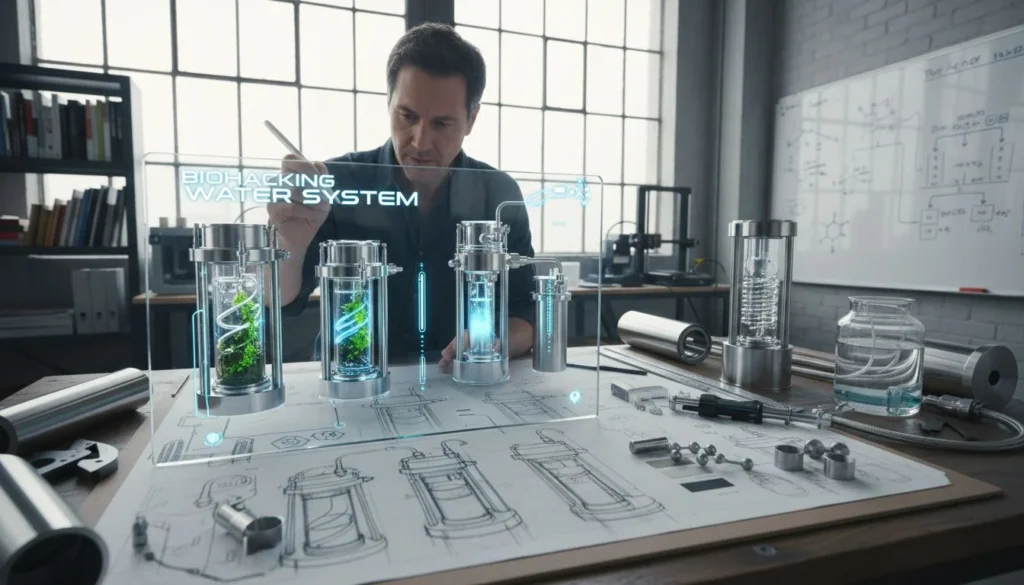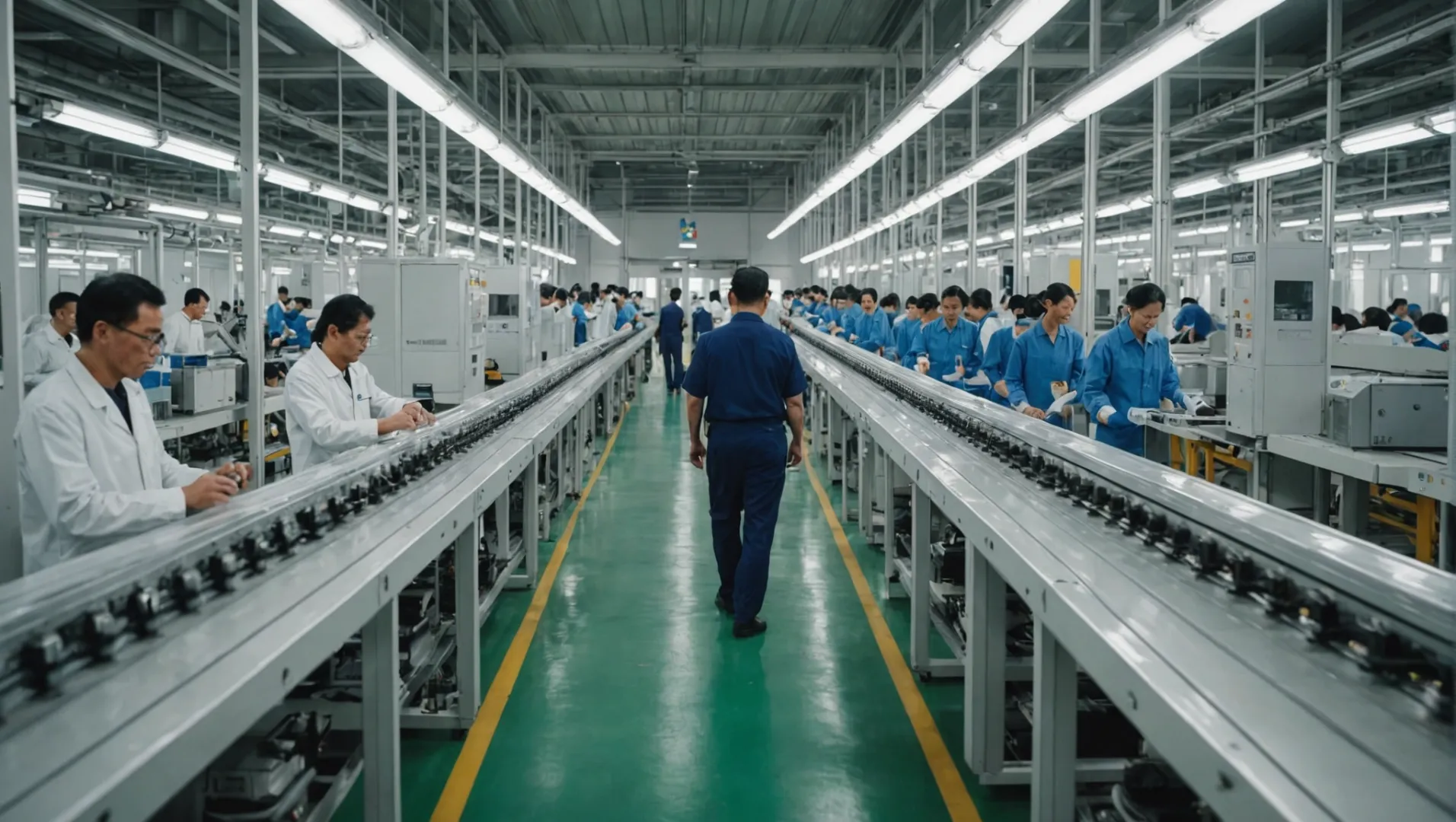
깨끗한 공기가 사치처럼 느껴지는 세상에서 공기청정기의 원산지가 정말 중요할까 하는 의문이 들 때가 많습니다.
현재 중국은 탄탄한 공급망, 제조 전문성, 비용 효율성을 바탕으로 공기청정기 생산을 선도하고 있습니다. 그러나 말레이시아는 생산 능력이 향상되고 다이슨과 같은 유명 브랜드가 시장에 기여하면서 중요한 플레이어로 부상하고 있습니다.
이 주제에 대해 자세히 알아볼수록 중국이 선두를 달리고 있지만 말레이시아가 그다지 뒤처지지 않는다는 것을 알 수 있습니다. 이 두 나라가 서로 어떻게 비교되는지 살펴봅시다!
중국이 말레이시아의 공기청정기 생산을 주도하고 있습니다.True
중국은 이미 구축된 인프라와 비용 효율성으로 선두를 달리고 있습니다.
중국이 공기청정기 생산에서 지배적인 위치를 차지하게 된 이유는 무엇일까요?
중국이 공기청정기 생산에서 선두를 달리고 있는 것은 방대한 공급망, 제조 능력, 비용 효율성에서 비롯됩니다. 그렇다면 이러한 우위의 요인은 무엇일까요?
중국은 광범위한 공급망 네트워크, 역사적 전문성, 경쟁력 있는 제조 비용으로 인해 공기청정기 생산을 주도하고 있습니다.
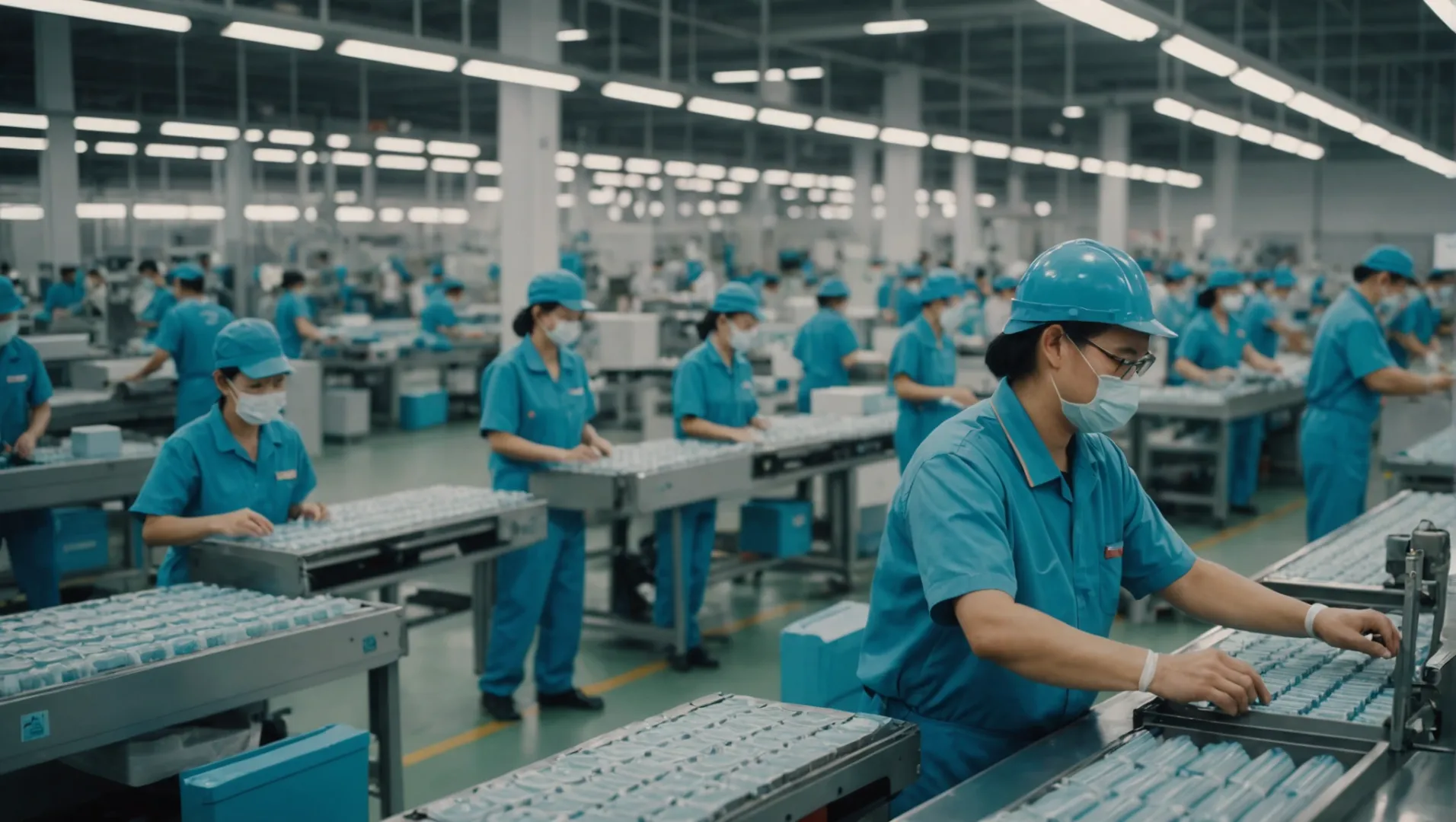
공급망의 힘
중국은 수년에 걸쳐 광범위한 공급업체 및 제조업체 네트워크를 세심하게 구축하여 매우 효율적인 공급망 시스템1 공기청정기 생산을 지원합니다. 이 강력한 인프라를 통해 플라스틱 부품부터 전자 모듈까지 필요한 모든 부품을 쉽게 구할 수 있어 리드 타임과 비용을 절감할 수 있습니다.
제조 전문성
전자제품 및 소비재 제조 분야에서 수십 년의 경험을 쌓은 중국은 고품질 공기청정기를 생산하는 데 있어 독보적인 전문성을 보유하고 있습니다. 이러한 전문성은 기술 노하우뿐만 아니라 시장 수요에 빠르게 혁신하고 적응할 수 있는 능력에 관한 것이기도 합니다.
비용 효율성
중국을 지배적인 플레이어로 만드는 중요한 요소 중 하나는 비용 효율성입니다. 중국에서의 제조는 낮은 인건비와 규모의 경제로 인해 여전히 비용 효율성이 높습니다. 말레이시아와 같은 국가로의 생산 이전 논의에서 언급했듯이 잠재적인 관세 인상에도 불구하고 중국의 비용 이점이 이러한 추가 비용보다 더 큰 경우가 많습니다.
혁신과 기술 발전
중국은 대량 생산뿐만 아니라 혁신의 최전선에도 서 있습니다. 많은 중국 기업이 R&D에 막대한 투자를 통해 공기 정화 기술을 개선하여 전 세계 소비자에게 더 효과적이고 합리적인 가격으로 제공하고 있습니다. 이러한 지속적인 혁신 주기를 통해 중국은 양과 질 모두에서 선두를 유지하고 있습니다.
글로벌 시장 영향력
중국은 공기청정기 생산에서 지배적인 위치를 차지하고 있기 때문에 글로벌 가격 및 기술 트렌드에도 상당한 영향력을 행사하고 있습니다. 최대 제조업체인 중국은 다른 국가가 따라잡기 힘든 경쟁력 있는 가격을 책정하는 동시에 업계의 미래를 형성하는 기술 발전을 주도하고 있습니다.
결론적으로 말레이시아가 강력한 경쟁자로 부상하고 있지만, 중국은 공급망 효율성, 제조 전문성, 비용 이점, 혁신 정신의 결합으로 공기청정기 시장의 리더로서의 입지를 계속 굳건히 하고 있습니다.
중국의 공급망은 공기청정기 생산 비용을 절감합니다.True
중국의 효율적인 공급망은 부품 가용성을 보장하고 비용을 절감합니다.
말레이시아는 공기청정기 혁신에서 중국을 앞질렀습니다.False
중국은 막대한 R&D 투자로 공기청정기 혁신을 주도하고 있습니다.
말레이시아는 공기청정기 시장에서 어떻게 부상하고 있나요?
공기청정기 시장이 발전함에 따라 말레이시아는 중국과 같은 기존 강자들과 함께 주목할 만한 경쟁자로 자리매김하고 있습니다.
말레이시아는 중국에 비해 높은 생산 비용 등의 어려움에도 불구하고 제조 역량을 강화하고 글로벌 브랜드를 유치하며 공기청정기 시장에서 부상하고 있습니다.
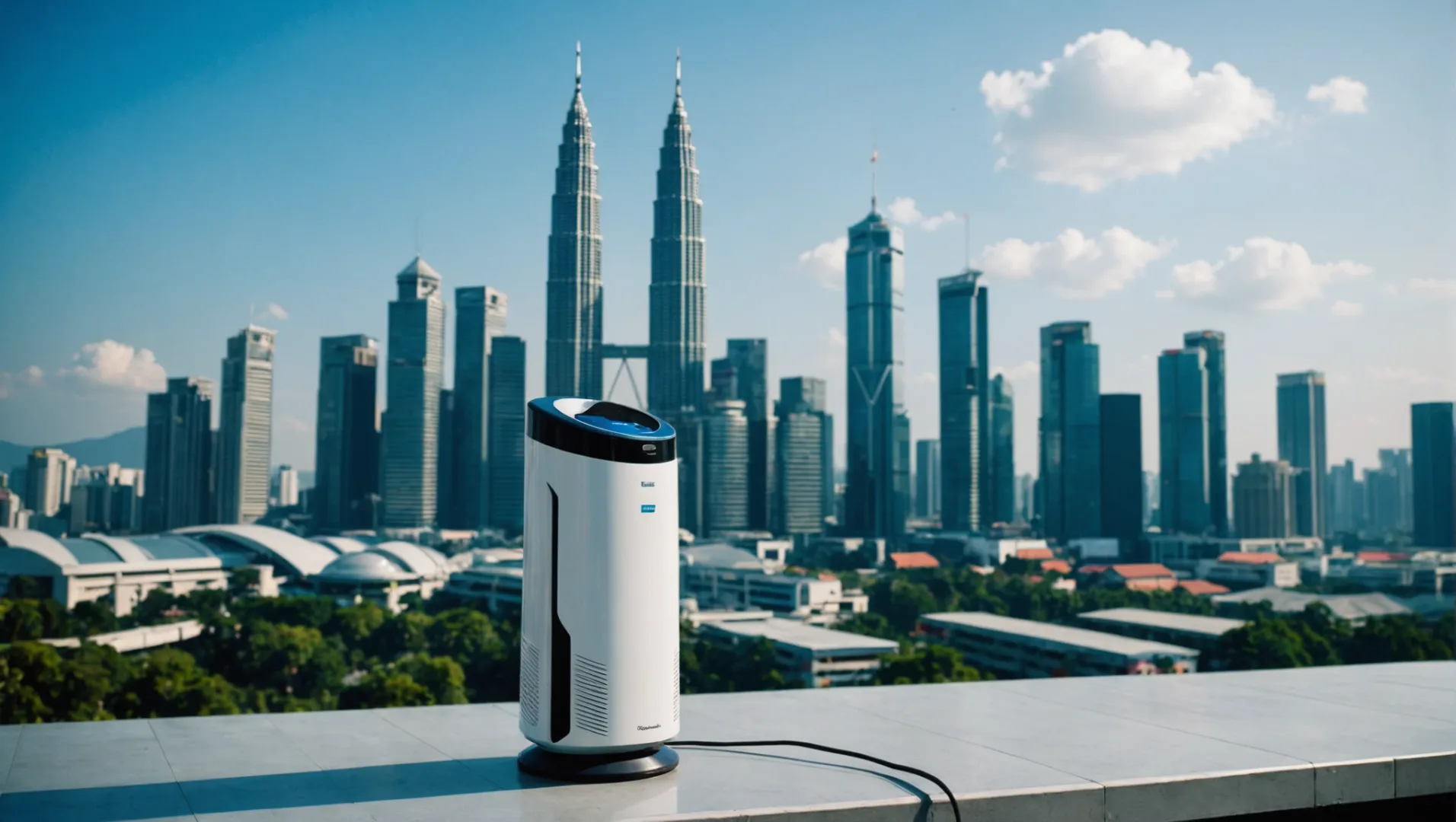
말레이시아의 시장 내 전략적 위치
말레이시아의 공기청정기 시장에서의 부상은 전략적 위치와 성장하는 산업 기반에 기인합니다. 이 동남아시아 국가는 생산지를 다변화하고자 하는 제조업체에게 유리한 환경을 제공합니다. 다이슨과 같은 글로벌 브랜드는 말레이시아의 급성장하는 산업 역량에 힘입어 이미 말레이시아에서 입지를 구축하고 있습니다.
글로벌 무역 정책의 영향
특히 관세와 같은 글로벌 무역 정책의 변화도 말레이시아로의 생산지 이전에 영향을 미치고 있습니다. 잠재적인 관세로 인해 중국산 제품에 대한 비용이 증가함에 따라 많은 기업이 대체 생산지를 모색하고 있습니다. 말레이시아는 상대적으로 안정적인 정치 환경과 개선된 제조 인프라로 인해 실행 가능한 옵션을 제공합니다.
도전과 기회
말레이시아는 많은 기회를 제공하지만 도전 과제에도 직면해 있습니다. 한 가지 주요 장애물은 중국에 비해 높은 생산 비용입니다. 약 10~15%로 추정되는 이 증가는 노동 효율성과 중국에서 주요 부품을 수입해야 하는 등의 요인으로 인해 발생합니다. 그러나 잠재적인 관세 혜택과 다각화된 공급망의 전략적 이점이 이러한 비용을 상쇄할 수 있습니다.
로컬 브랜드와 혁신의 역할
말레이시아 현지 브랜드는 혁신과 가격 경쟁력을 바탕으로 공기청정기 업계에서 두각을 나타내기 시작했습니다. 이러한 브랜드의 존재는 글로벌 시장에서 말레이시아의 위상을 높일 뿐만 아니라 현지 경제 성장도 촉진합니다.
주요 구성 요소 비교
| 요인 | 중국 | 말레이시아 |
|---|---|---|
| 노동 효율성 | 높음 | 보통 |
| 생산 비용 | Lower | 10-15% 더 높음 |
| 컴포넌트 임포트 종속성 | 낮음 | 높음 |
이러한 역학 관계를 이해함으로써 기업은 공기청정기를 어디에서 생산할지 정보에 입각한 결정을 내릴 수 있습니다. 말레이시아로의 전환은 이 필수 산업의 지형을 재편하여 전 세계 소비자에게 영향을 미칠 수 있습니다. 다음에 대한 심층적인 인사이트를 얻으려면 글로벌 무역 정책 영향2 그리고 말레이시아의 제조 역량3를 클릭하고 추가 판독 및 분석을 살펴보세요.
말레이시아는 중국보다 생산 비용이 저렴합니다.False
말레이시아의 생산 비용은 중국에 비해 10~15% 정도 높습니다.
다이슨은 말레이시아에서 입지를 다지고 있습니다.True
다이슨은 말레이시아에 진출한 글로벌 브랜드 중 하나입니다.
생산 교대에 영향을 미치는 주요 요인은 무엇인가요?
공기청정기 산업의 생산 변화는 여러 가지 복합적인 요인에 의해 주도되고 있으며, 글로벌 제조 환경을 재편하고 있습니다.
생산 전환에 영향을 미치는 주요 요인으로는 비용 효율성, 공급망의 견고성, 지정학적 변화, 기술 발전 등이 있습니다. 이러한 요소는 기업이 제품 생산지를 결정하는 데 영향을 미치며, 공기청정기 산업에 큰 영향을 미칩니다.
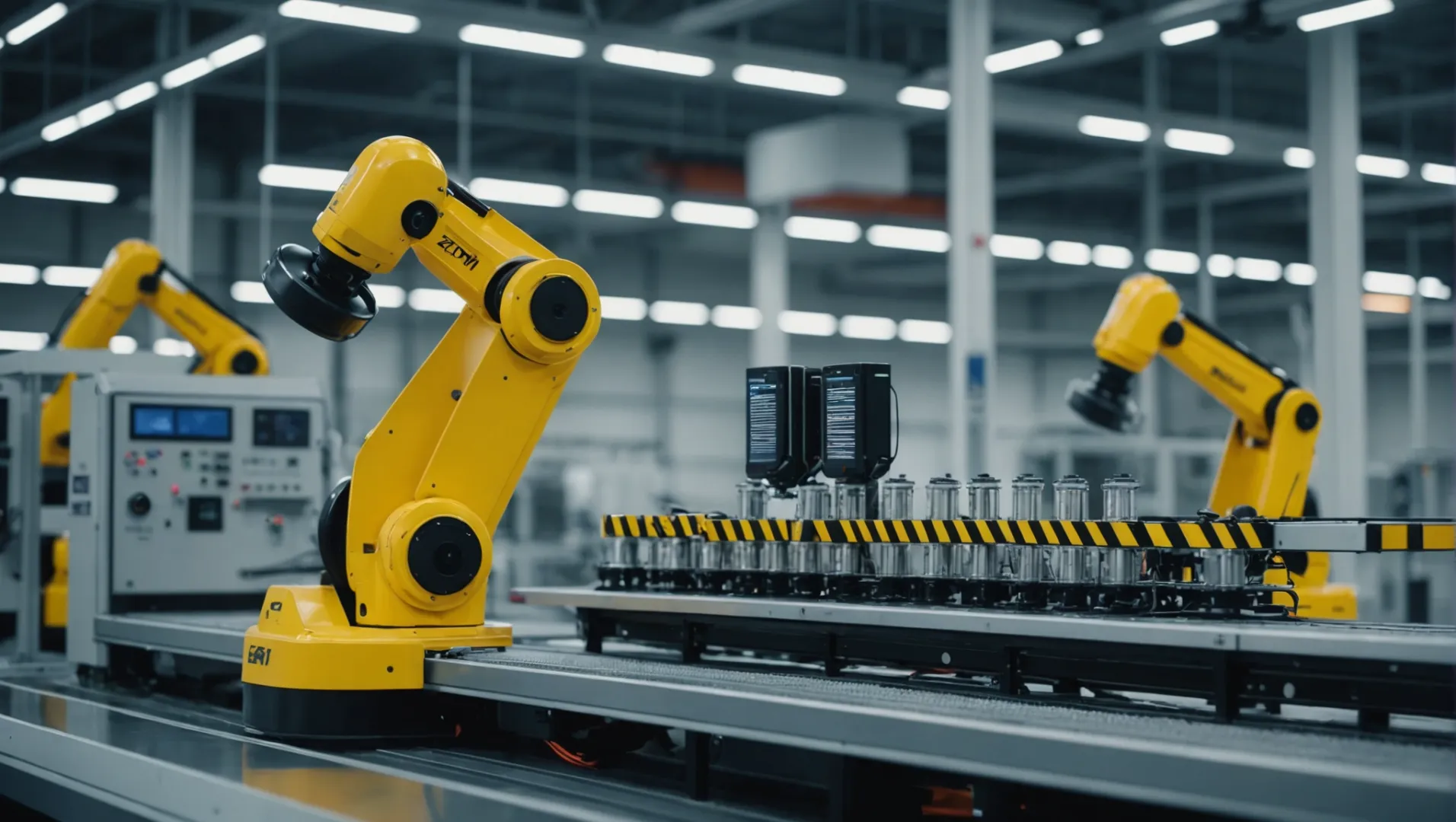
비용 효율성
생산 전환에 영향을 미치는 주요 요인 중 하나는 비용 효율성입니다. 예를 들어, 현재 중국이 공기청정기 생산에서 선두를 달리고 있는 것은 노동 효율성과 잘 통합된 공급망을 통해 낮은 비용을 유지할 수 있는 능력에 기인합니다. 그러나 관세 및 기타 경제적 요인이 변화함에 따라 기업은 초기 비용은 더 높을 수 있지만 장기적으로 비용을 절감할 수 있는 말레이시아 같은 국가로 이전하는 것이 유리할 수 있습니다. 이러한 역학 관계를 이해하는 것은 운영 비용을 최적화하려는 제조업체에게 매우 중요합니다.
공급망 견고성
중국이 제조업 분야에서 역사적으로 우위를 점할 수 있었던 것은 탄탄한 공급망 네트워크에서 비롯되었습니다. 이러한 인프라는 자재와 부품의 안정적인 흐름을 보장함으로써 공기청정기 생산을 비롯한 다양한 산업을 지원합니다. 그럼에도 불구하고 공기청정기의 일부 주요 부품은 중국에서 수입하고 있으며, 심지어 다이슨과 같은 말레이시아의 제조업체도 중국에서 수입하고 있습니다. 글로벌 공급망에 차질이 생기면서 공급처 다변화의 필요성이 대두되고 있으며, 말레이시아처럼 제조 역량이 성장하고 있는 국가가 매력적인 대안이 되고 있습니다.
지정학적 변화
지정학적 환경은 제조업의 의사 결정에 큰 영향을 미칩니다. 예를 들어, 행정부에 따라 미국의 무역 정책이 바뀌면 상당한 변화가 일어날 수 있습니다. 중국산 제품에 대한 관세 인상 가능성으로 인해 일부 제조업체는 다른 아시아 국가로의 이전을 고려하고 있습니다. 말레이시아는 전략적 위치와 떠오르는 산업 기반 덕분에 실행 가능한 옵션으로 주목받고 있습니다.
기술 발전
기술 발전도 생산 전환에 중요한 역할을 합니다. 말레이시아의 제조 역량이 빠르게 성장함에 따라 첨단 기술의 통합은 말레이시아의 매력을 더욱 높일 수 있습니다. 앞서나가고자 하는 기업은 신기술 도입의 이점과 관련된 비용 및 잠재적 위험을 비교 검토해야 합니다.
이러한 요소는 서로 연결되어 있고 복잡하기 때문에 기업은 항상 최신 정보를 파악하고 적응력을 갖춰야 합니다. 생산 전환 결정은 한 가지 요소에 의해서만 결정되는 것이 아니라 업계의 미래 환경을 형성할 수 있는 여러 가지 영향이 복합적으로 작용합니다. 이러한 요소가 상호 작용하는 방식에 대해 자세히 알아보려면 다음을 살펴보세요. 제조업에 대한 지정학적 영향4 또는 제조 기술의 발전5.
중국은 비용 효율성으로 인해 공기청정기 생산을 주도하고 있습니다.True
중국은 노동 효율성과 공급망 통합을 통해 낮은 비용을 유지하고 있습니다.
말레이시아의 제조업은 기술 발전이 부족합니다.False
말레이시아의 제조 역량은 첨단 기술을 통해 성장하고 있습니다.
중국과 말레이시아의 생산 비용은 어떻게 비교되나요?
중국과 말레이시아의 생산 비용을 이해하면 공기청정기 산업에서 전략적 비즈니스 의사 결정을 내릴 수 있습니다.
중국의 생산 비용은 일반적으로 확립된 공급망과 제조 효율성으로 인해 더 낮습니다. 말레이시아는 약간 더 비싸지만 관세 인하와 현지 역량 강화로 인한 잠재적 비용 절감 효과가 있습니다.
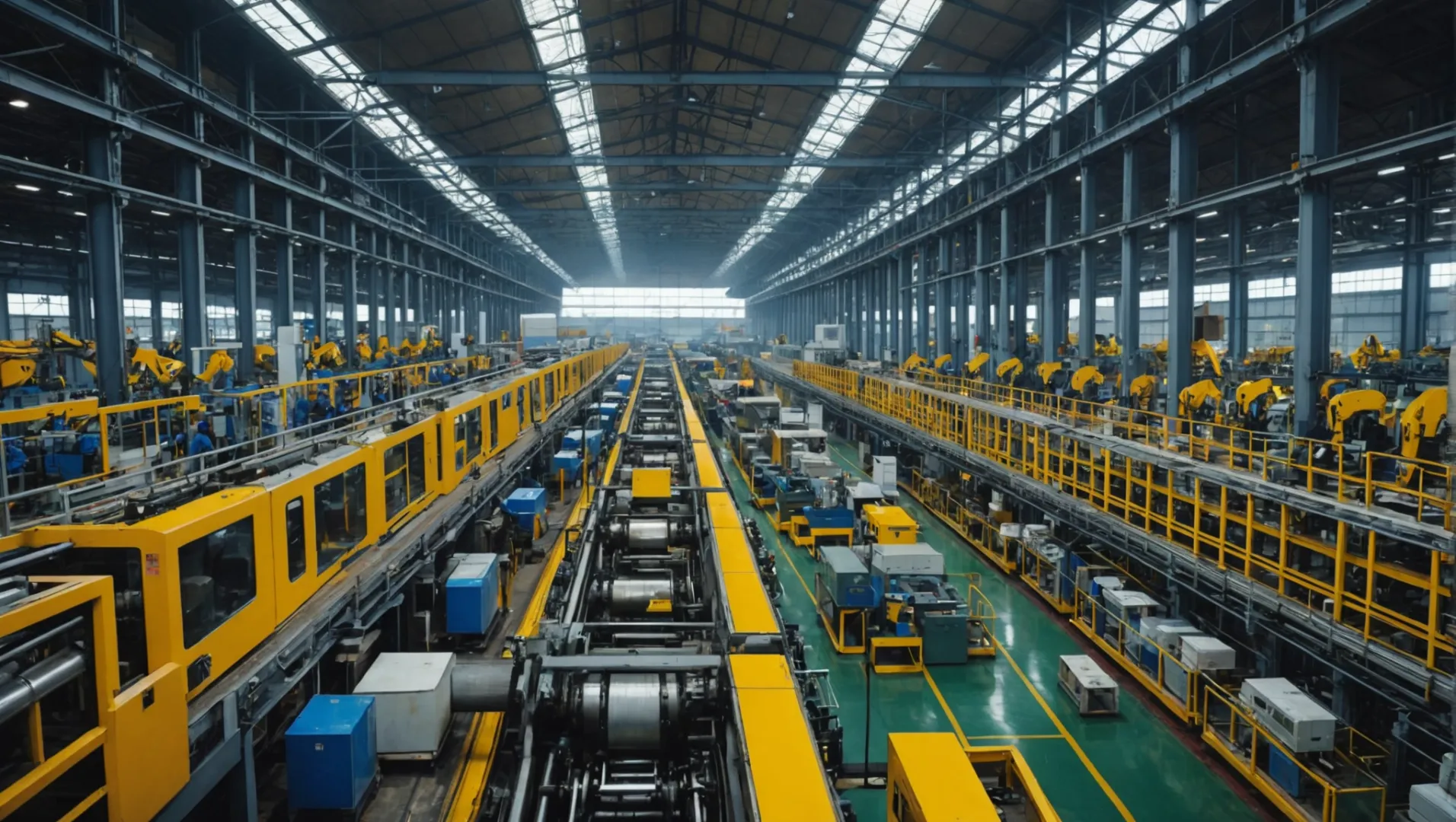
인건비 비교
생산 비용에 영향을 미치는 가장 중요한 요소 중 하나는 인건비입니다. 중국의 인건비는 경제 성장과 생활 수준 향상으로 인해 수년 동안 꾸준히 상승하고 있습니다. 그러나 중국은 여전히 생산 효율성을 높이는 숙련된 대규모 인력의 혜택을 누리고 있습니다.
반면 말레이시아는 일반적으로 낮은 인건비로 경쟁력을 갖추고 있습니다. 말레이시아는 제조업 부문을 지속적으로 발전시키고 있기 때문에 기업은 기술 수준에 영향을 주지 않으면서도 보다 저렴한 인력을 활용할 수 있습니다.
공급망 효율성 평가
중국의 잘 구축된 공급망을 통해 제조업체는 필수 구성 요소, 재료 및 전문 지식에 즉시 액세스할 수 있습니다. 이를 통해 생산 비용을 절감할 수 있을 뿐만 아니라 처리 시간도 단축할 수 있습니다.
말레이시아는 공급망을 개발하고 있지만 여전히 주요 부품을 중국에서 수입하는 데 의존하고 있습니다. 이러한 의존도는 수입 수수료와 물류 비용으로 인해 생산 비용을 증가시킬 수 있습니다. 하지만 말레이시아의 제조 역량이 향상됨에 따라 이러한 비용은 감소할 것으로 예상됩니다.
관세 및 무역 정책의 영향
글로벌 무역 정책의 변화로 관세가 생산 비용을 최적화하려는 기업에게 중요한 고려 사항이 되었습니다. 예를 들어, 중국산 제품에 대한 미국의 새로운 관세가 크게 인상되면 말레이시아로 생산을 이전하면 이러한 비용을 줄일 수 있습니다.
중국산 제품에 대한 60% 관세 인상 가능성은 공기청정기 제조업체가 미국과 같은 주요 시장에 대한 수출 관세 인하 혜택을 누릴 수 있는 말레이시아로 이전하도록 장려할 수 있습니다.
생산 비용 요소 요약 표
| 요인 | 중국 | 말레이시아 |
|---|---|---|
| 인건비 | 상승 | Lower |
| 공급망 효율성 | 높은 효율성 | 개발 |
| 컴포넌트 임포트 종속성 | 낮음 | 높음 |
| 관세 영향 | 미국에서는 잠재적으로 높습니다. | 예상되는 관세 인하 |
말레이시아의 성장하는 인프라와 우호적인 무역 정책은 비용과 시장 접근성의 균형을 맞추고자 하는 제조업체에게 매력적인 대안이 될 수 있습니다. 그러나 기업은 이러한 장점과 중국의 잘 정립된 효율성을 비교 검토해야 합니다.
무역 정책이 글로벌 제조업에 미치는 영향에 대한 더 많은 인사이트를 얻으려면 다음을 살펴보세요. 글로벌 무역 영향6. 이 리소스는 국제 규제가 생산 전략을 어떻게 형성할 수 있는지에 대한 광범위한 맥락을 제공합니다.
중국은 말레이시아보다 생산 비용이 저렴합니다.True
중국은 이미 구축된 공급망과 제조 효율성의 이점을 누리고 있습니다.
말레이시아의 인건비는 중국보다 높습니다.False
말레이시아는 중국에 비해 인건비가 저렴하여 경쟁력에 도움이 됩니다.
결론
현재는 중국이 우위를 점하고 있지만, 말레이시아의 빠른 발전은 공기청정기 생산의 미래를 바꿀 수 있습니다.
-
중국의 공급망 이점이 공기청정기 생산에 어떤 영향을 미치는지 알아보세요...: 공기청정기 생산에서 중국의 우위는 비용 효율성과 탄탄한 공급망 인프라에서 비롯됩니다. 중국은 공기 청정기 분야에서 탁월합니다 ... ↩
-
글로벌 무역 정책이 전 세계 제조업 의사 결정에 어떤 영향을 미치는지 알아보세요: 무역 정책, 새로운 정부 협약 및 규제로 인해 새로운 전략이 필요해지면서 제조업의 글로벌화가 변화하고 있습니다. ↩
-
말레이시아의 공기 청정기 부문에서 성장하는 말레이시아의 제조 능력에 대해 알아보십시오: 말레이시아 공기 청정기 시장은 2023 년에 7,956 만 달러의 가치를 지니고 있으며 예측 기간 동안 10.32%의 CAGR로 강력한 성장을 예상 할 것으로 예상됩니다 ... ↩
-
지정학적 역학이 전 세계 제조 위치에 어떤 영향을 미치는지 알아보세요: 지정학적 긴장은 전자 및 재생 에너지 제품 제조업체의 중요한 광물에 대한 접근을 위협할 수 있습니다. ↩
-
최신 제조 공정을 형성하는 혁신에 대해 알아보세요...: 1. 디지털화와 인더스트리 4.0. 디지털화는 제조 부문에 큰 영향을 미쳐 기업이 프로세스를 최적화하고 개선할 수 있도록 지원합니다. ↩
-
무역 정책이 제조업 역학에 미치는 영향에 대한 통찰력을 얻으십시오: 무역 제한이 수익 마진에 미치는 잠재적 영향으로 인해 대부분의 제조업체는 다음에서 소싱하여 투입 비용을 절감할 수 있는 옵션을 모색하고 있습니다. ↩



